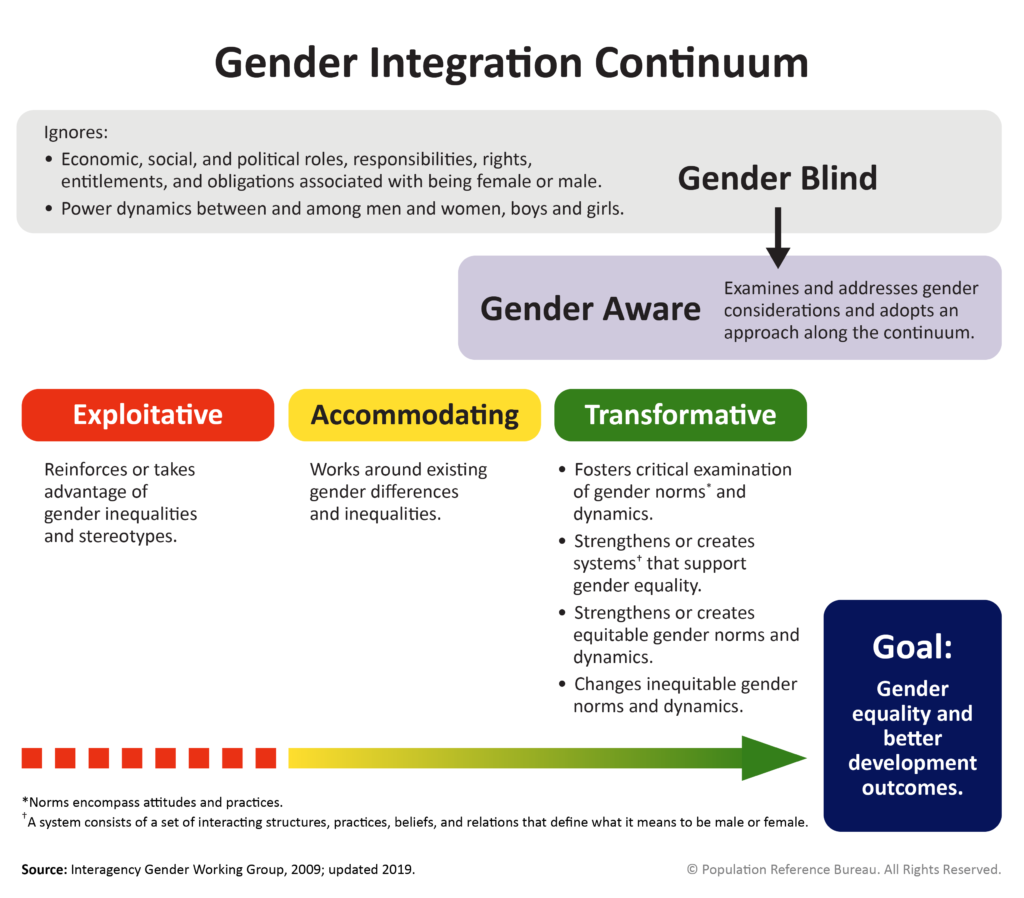Infographic: Intimate Partner Violence and Family Planning–2023 Update
Developed for the 16 Days of Activism against Gender-Based Violence campaign, this infographic explores the intersection of intimate partner violence and family planning.
Our training materials can be used to introduce a broad range of audiences and backgrounds to important concepts related to gender and health. Each training course focuses on one of five themes that complement the CORE Gender 101 agenda: Gender Integration, HIV + Sexuality, Safe Motherhood, Gender-Based Violence, and Constructive Male Engagement. The courses are designed to meet the geographic and technical needs of cooperating agencies, USAID Missions, and specific projects. Materials range from basics such as using a shared gender vocabulary and programmatic guidance, to user guides on how to conduct a gender analysis, to exercises for gender trainings. The trainings are geared to be used by anyone and with any audience, even those learning about gender for the first time!
Our popular Gender Integration Continuum framework is an important tool to assess how programs do (or do not) address gender and move them toward more gender-transformative actions. An updated User’s Guide for facilitating training on use of the continuum is available, along with other materials.
Developed for the 16 Days of Activism against Gender-Based Violence campaign, this infographic explores the intersection of intimate partner violence and family planning.
This infographic highlights and synthesizes some of the key takeaways from the 2022 IGWG Plenary, suggesting promising practices for identifying community leaders and improving partnerships with community leaders and social movements in gender transformative programming. This resource intends to be a tool for program designers and implementers who wish to foster more community leadership and improve collaborations with community leaders within existing and future programs. The infographic also offers insights for program designers and implementers to strengthen programs that have already integrated elements of community mobilization and leadership.
The Interagency Gender Working Group (IGWG) Gender Integration Continuum is a necessary tool to identify whether an intervention encourages gender equity to improve development outcomes, such as in reproductive health. The Gender Integration Continuum graphic is available in English, French, Portuguese, and Spanish.
Men caregivers play an important role in ensuring all children receive nurturing care. From supportive services to enabling policies and beyond, this infographic from MOMENTUM Country and Global Leadership shows how men can be supported to provide nurturing care for their children from pregnancy to early childhood.
This how-to note and accompanying infographic focuses on helping USAID and implementing partners who have a role in GBV programming understand how programs can achieve a survivor-centered approach. This approach upholds four guiding principles: keeping survivors safe, protecting confidentiality, demonstrating respect for survivors’ dignity and self-determination, and practicing non-discrimination.

